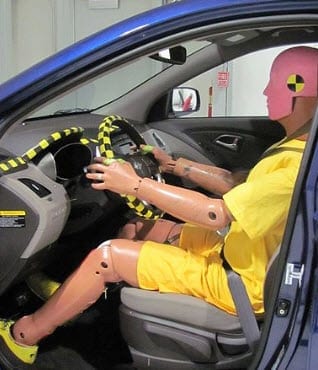Many are wondering why a certain type of crash test earns low stars for newer vehicles.
In recent tests that are often considered by auto insurance companies in order to calculate premiums, only three out of eleven midsized luxury cars have earned a passing grade.
This type of crash test involves a collision between the front corners of two vehicles.
They are set up to mimic a potential head on collision, where the drivers have tried to avoid by swerving away. The results regarding the poor performance of these vehicles in this common test were included in a report by the Insurance Institute for Highway Safety (IIHS). Many auto insurance experts are pointing out that this doesn’t necessar ily mean that the new vehicles are not safe. Instead, it means that that there is now a higher expectation for safety and that it is measurable, so safety experts can now focus on a new area for crash performance.
ily mean that the new vehicles are not safe. Instead, it means that that there is now a higher expectation for safety and that it is measurable, so safety experts can now focus on a new area for crash performance.
The new vehicle crash tests from the IIHS are funded by the auto insurance industry.
These tests are used to help to rate the performance of new cars as being poor, marginal, acceptable, and good. This then provides auto insurance companies and consumers with information regarding the way that a vehicle performs in crash. It can help consumers to choose the right vehicles for their needs.
It is important to note that these tests and measures are not the same as the five star ratings that are assigned by the National Highway Traffic Safety Administration (NHTSA), which are required by federal regulations. However, these two types of tests are both adjusted every now and then in order to keep up with the technology, understanding, and expectations for safety in the auto insurance industry.
As the tests evolve, the ratings that cars receive will typically fall. For example, in 2009, 94 of the vehicles that were tested were awarded the Top Safety Pick designation from the IIHS. However, in 2010, when a new roof strength test was added, only 58 of the tested vehicles were given that designation. Therefore, in the most recent test, it may appear that the vehicles performed poorly and that auto insurance premiums should rise as a result, but this is not necessarily the case.
